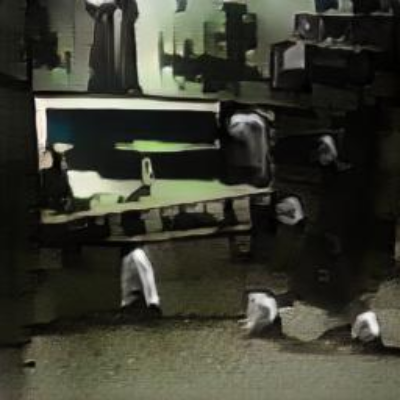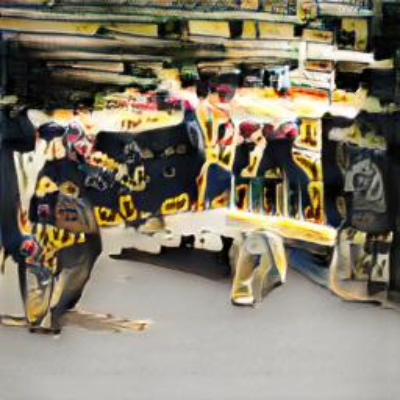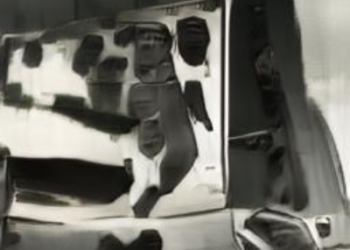Letting everyday people share their experiences openly and without shame can make the topic no longer taboo.
I don’t think it’s so much about women’s health in particular, as much as it is about eradicating the stigma and taboo around some of these things that to me are very normal things.
I think Hollywood in general has a long way to go on a lot of different topics, not just abortion.
I think in the coming years, we’re probably going to start to see more stories that come out of Hollywood that feel like we’re watching dynamic characters who are whole human beings—the full person before we learn about their B story, which is that they had an abortion.
I really want abortions to be the B story in all the Hollywood movies.
Hollywood‘s Menopause Problem: «The Silence Around It Perpetuates Silence Among Women»
While the industry has tended to shy away from discussions of menopause, Gwyneth Paltrow, Taraji P. Henson and Pamela Adlon are addressing the still-often-taboo topic: «This is probably one of the best times of my life,» says 55-year-old ‘Sharp Objects’ creator Marti Noxon.
In this age of fourth-wave feminism, menopause is a surprisingly taboo topic.

And that includes Hollywood.
«The tech world is ahead of Hollywood,» says Angelo, who turned away investors on her second series of funding.
The Midnight Movie: New Hollywood at its Finest
As the classical Hollywood period declined in the late 1960s, New Hollywood began to rise, bringing forth new images and narratives that had never been depicted before on mainstream American screens.
The most daring, countercultural works of the cycle included films that pushed boundaries of taste, broke apart narrative convention, and looked back to classical Hollywood for the purpose of critique.
New Hollywood’s ‘newness’ was dependent on concepts like making the implicit explicit, reworking old genres, and subverting familiar filmic conventions in favour of greater artistic freedom – the midnight movie allowed these ideas to flourish.
As New Hollywood is a cinematic period largely built upon revisionism, it is important to note that the term ‘midnight movie’ originated during the 1950s, referring to earlier Hollywood films that were shown on television late at night.
The resurgence of the midnight movie in the late 1960s is, much like New Hollywood as a whole, a revision of an existing film practice, with filmmakers beginning to make films expressly for the purpose of being seen by a curious youth audience.
Personally, I believe that the chaotic, boundary-pushing tendencies of the new midnight movie embody how 1970s Hollywood is known for its departure from the conventional, classical Hollywood style.
From the early 1930s onward, the Motion Picture Production Code played a major role in dictating what kind of films could be made in Hollywood; the Hays code, with its Catholic sense of morality, prohibited taboo imagery and subject matter.
From the introduction of the code until the early 1960s, Hollywood films were almost entirely prevented from showing any kind of explicit content, with topics surrounding sexuality being completely prohibited.
As one of the earliest examples of the New Hollywood midnight movie, the obscenity of this film can be interpreted as an immediate reaction to the decline of the studio era, pushing hard into a new debauched direction against what was previously permitted.
As classical Hollywood films were unable to explicitly show ‘any inference of sex perversion’ or ‘sex hygiene’, depictions of homosexuality could only be lightly implied by filmmakers.

While the content of the film may be the more noteworthy topic, the production and cinematography are also certainly distinct from the classical Hollywood aesthetic.
The quality of the film stock is also far lower than that of a Hollywood production, and when combined with the use of natural light this results in a distinctly fuzzy, desaturated look.
The choice of location also seems at odds with the glamorous spaces depicted in Hollywood cinema: Baltimore was notorious for crime, and the areas chosen for it are dirty and dilapidated.
This suggests that Waters is depicting an underworld that Hollywood had previously been able to ignore, creating a new type of film by showing what had rarely been brought to screens before.
Though the inherent radicalness in depicting these unacknowledged spaces has worn off to an extent over the years, it can be seen contemporarily as generating New Hollywood newness via bringing forth what had previously never been made explicit.
By signposting this act as documentary rather than narrative fiction, Waters casts a light on the artifice of Hollywood film, suggesting that New Hollywood is a realm in which the unattainability of classical Hollywood perfection is no longer relevant.
As a film that mixes and reworks two seemingly incompatible genres from classical Hollywood – spectacular musicals and horror B-movies – The Rocky Horror Picture Show is an example of the subversive potential of the New Hollywood midnight movie.
Much like Pink Flamingos, the film was born out of an underground LGBTQ+ space that produced the original musical, The Rocky Horror Show, reinforcing the idea that New Hollywood was a period in which countercultural corners of society could finally be acknowledged and brought to the foreground.
While Rocky Horror… does similarly rely on the shock value of its content, it also aims to analyse the Hollywood films that preceded it, suggesting an evolution in the midnight movie from the immediate reaction of explicit content to the reconsideration of the fringes of classical Hollywood.
This is reflected in the film’s choice of aesthetic reference, as science fiction was a genre at the edge of Hollywood filmmaking that was not taken seriously in the classical era.
Much like what is often cited as the first of the New Hollywood films, Bonnie and Clyde, The Rocky Horror Picture Show opens with an extreme closeup of a pair of red lips, in an undetermined location or time.
This sense of destabilisation created by the lack of an establishing shot or any kind of reasoning for the extent of the closeup is opposed to the classical Hollywood style of maintaining continuity and keeping narrative coherence, removing this foundation of filmmaking for a new alternative.
Though this shot is highly sexually charged, the gender of the person behind the lips is never made clear – in fact, while the lips belong to actress Patricia Quinn, the singing voice is Richard O’Brien’s, unsettling the gender binary in a way that was prohibited in older Hollywood works.
A high-brow musical style used to present low brow content reflects the New Hollywood tendency to combine seemingly incompatible ideas in order to provoke a response of confusion or discomfort.
«The Time Warp» musical number blends the cinematography, choreography, and spectacle of a classical Hollywood musical number with the production design and costuming of horror and science fiction B-movies, combining two genres that were seemingly diametrically opposed.
In my opinion, no film better demonstrates the possibilities that New Hollywood held in giving more strange, marginal movies space to be widely seen and appreciated than David Lynch’s first feature film Eraserhead.
Additionally, rather than making explicit references to then society-wide taboos like homosexuality and cross-dressing, Eraserhead came from Lynch’s internal thoughts and fears surrounding fatherhood, unleashing them through artistic expression.
Much like these films, however, Eraserhead seeks to thematically and formally break down the foundations of classical Hollywood, looking to and critiquing the old in order to arrive at the new.
As one of the final midnight movies of the New Hollywood era, the film represents its logical endpoint, utilising new concepts like genre reworking and explicit content to such an extent that the new product is essentially indecipherable.
The entire film is shot in black and white, drawing inevitable comparisons to earlier cinema, and the nuclear 1950s aesthetic of many of the interiors is also suggestive of a more critical look at the era and its conventions from a New Hollywood perspective.
In a scene early on, in which Henry sits down to dinner with his girlfriend Mary X , Lynch subverts many expectations that were established in the history of conventional Hollywood filmmaking.
For its disturbing imagery and countercultural themes, I think that the scene in which Henry kills his baby epitomises the bizarre, personal tone of the film that provides it with New Hollywood newness, allowing the disturbing rumblings present in the film to come to a head.
This aligns with a trope of New Hollywood identified by scholar Todd Berliner, who states that films of the period often ‘situate their filmmaking practices between those of classical Hollywood and art cinema’.
The baby itself could even be described as a symbol of this countercultural underside of New Hollywood: an almost incomprehensible being that ended after only a short existence, but that nonetheless left a profound impact.
As a space that allowed New Hollywood tendencies to thrive at their most extreme, the midnight movie demonstrates the period at its most extravagant, explicit, and unconventional.
While this sub-genre produced many more works that the films mentioned, these best exemplify some key traits of the midnight movie, particularly those that represent how the newness of the New Hollywood period manifested formally and thematically.
As a space that actively encouraged taboo material and experimentation, the 1970s midnight movie is New Hollywood in its most concentrated form, especially as it also embodies the contradiction that this new, inventive work was ultimately sidelined by studios for films like Star Wars and Superman.
Even though the ‘religion’ founded by L. Ron Hubbard is a dangerous cult, it still holds sway in Hollywood.
Remini went on to say that because Cruise has a «nice guy» image, speaking out against him can cost you a career in Hollywood.
But that’s the Hollywood-bulls–t game people play.
Speaking to the publication, she said: «It was a period when my colleagues were increasingly demanding privacy and in the meantime being bisexual was considered a taboo».
Heard also spoke about the supposed liberalism in Hollywood, saying: «It is an industry full of fashionable people and noble ideals, but it does all the opposite of what it preaches».
She also implored gay male actors to come out of the closet, saying: «If every gay man that I know personally came out in Hollywood tomorrow… we’ll have a day of it, national ‘you know who you are day’ – if all of the gay men I knew personally came out tomorrow, then this would be a nonissue in a month».
On this time period and decision, Heard said : ‘It was a period when my colleagues were increasingly demanding privacy and in the meantime being bisexual was considered a taboo.
On Hollywood and Depp

In the interview, Heard also answered a question about whether or not Hollywood is really as liberal as it seems.
In further describing Hollywood, she said it often repeats all the same ideas based on what people approve.
Yet even as the Navy indicates it’s willing to discuss the taboo topic, it’s also shying away from three notorious little letters.
UFO carries an airport’s worth of baggage, bursting with urban legends, government secrecy, and over-the-top Hollywood movies.
They sailed into Hollywood, which to this day remains obsessed with stories about aliens, from friendly creatures to nightmarish monsters.
The text of this article was generated by the Breaking The Silence system that collected 7 news articles posted on the web from January 2019 to September 2020 and clustered for the taboo subjects related to Hollywood














































































